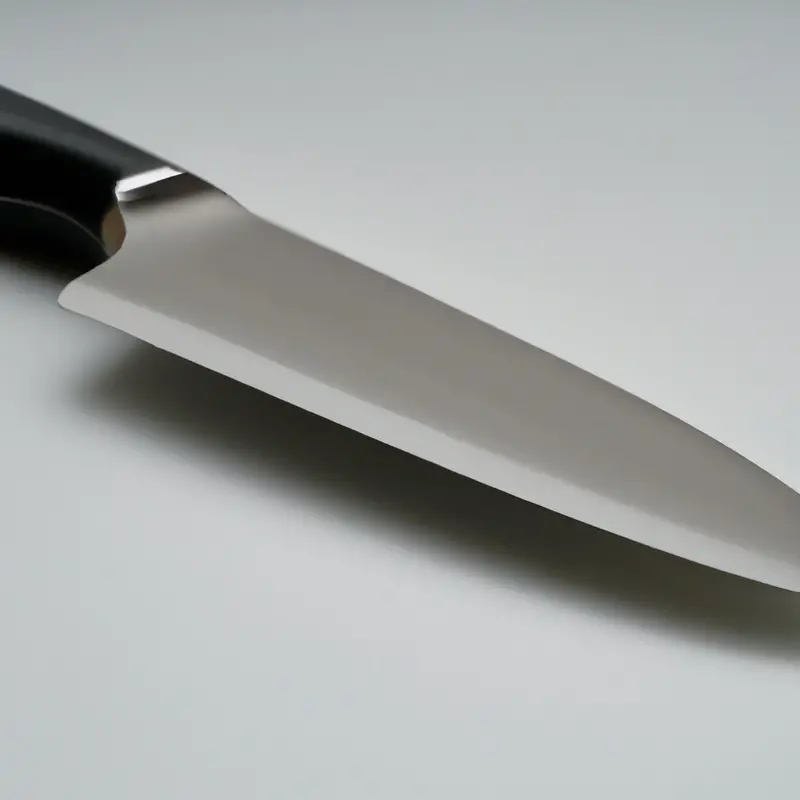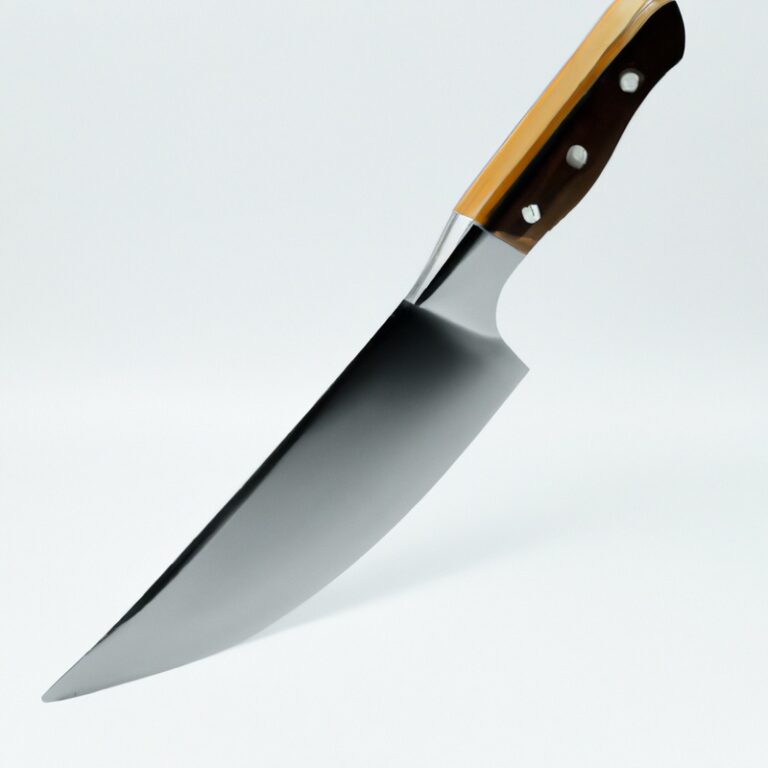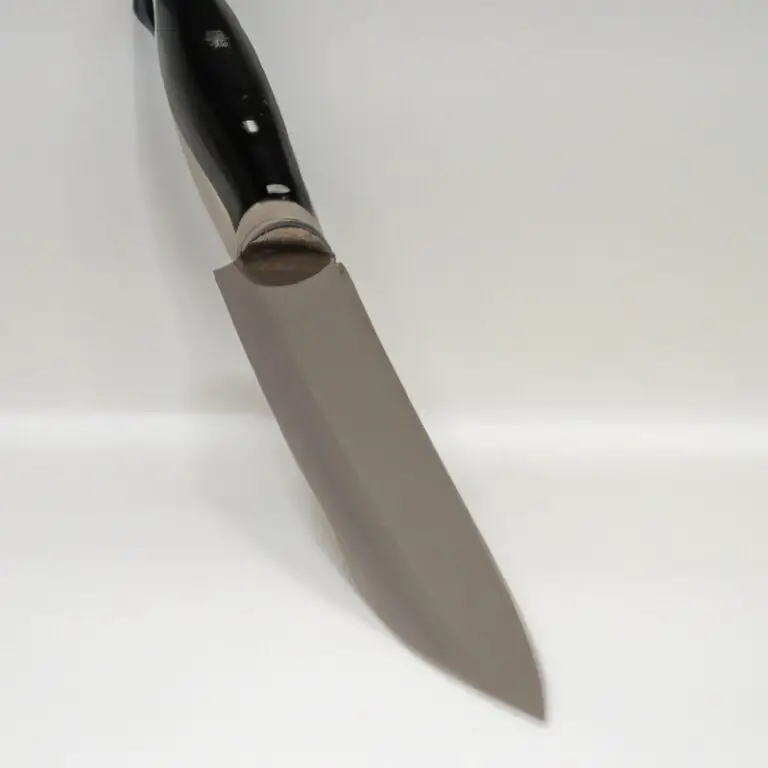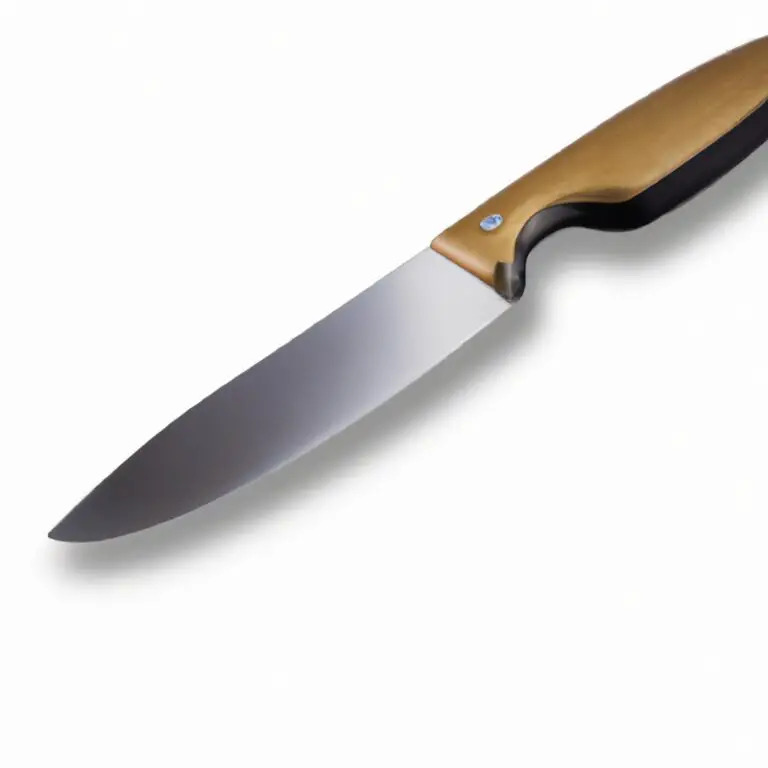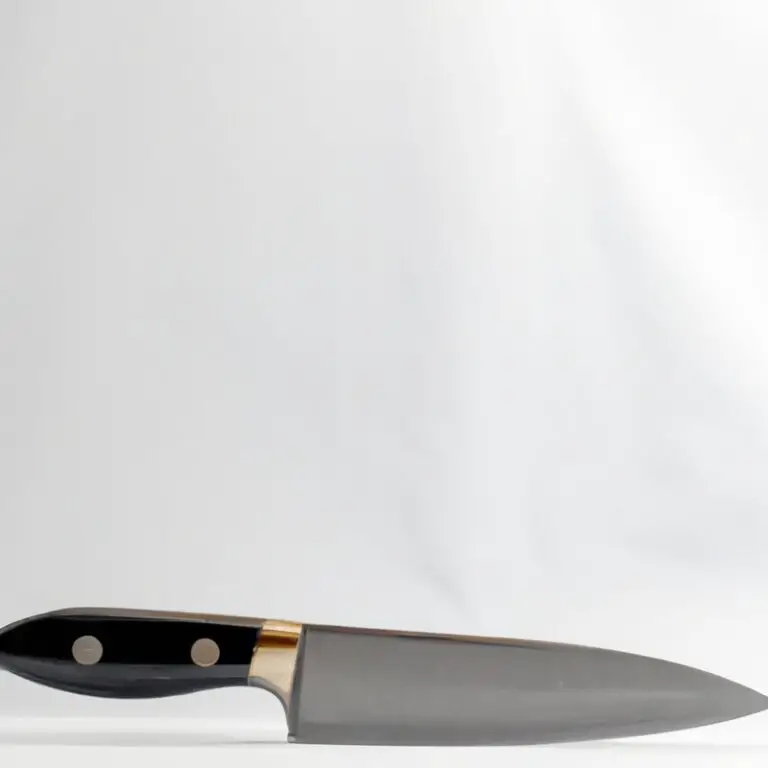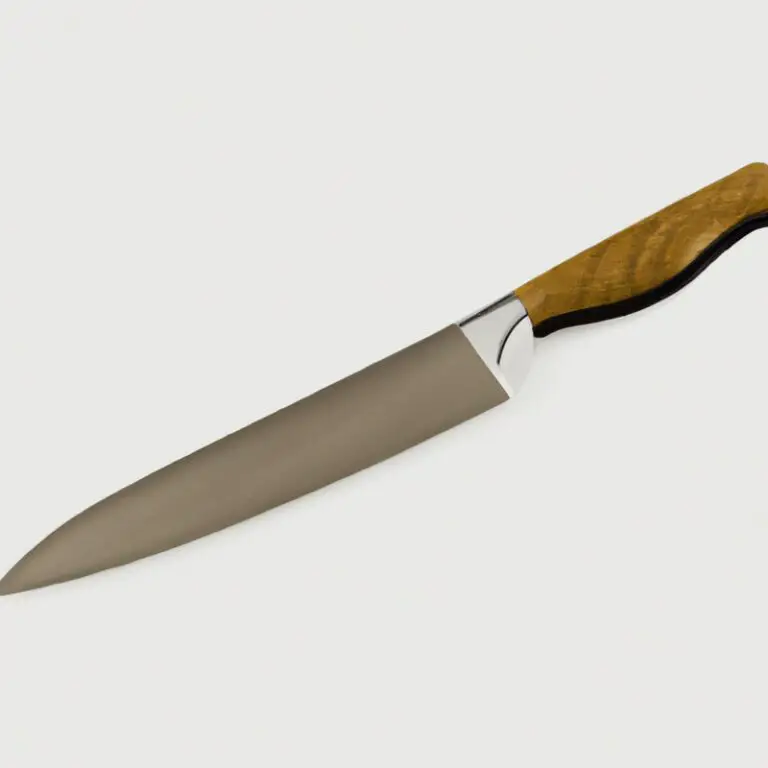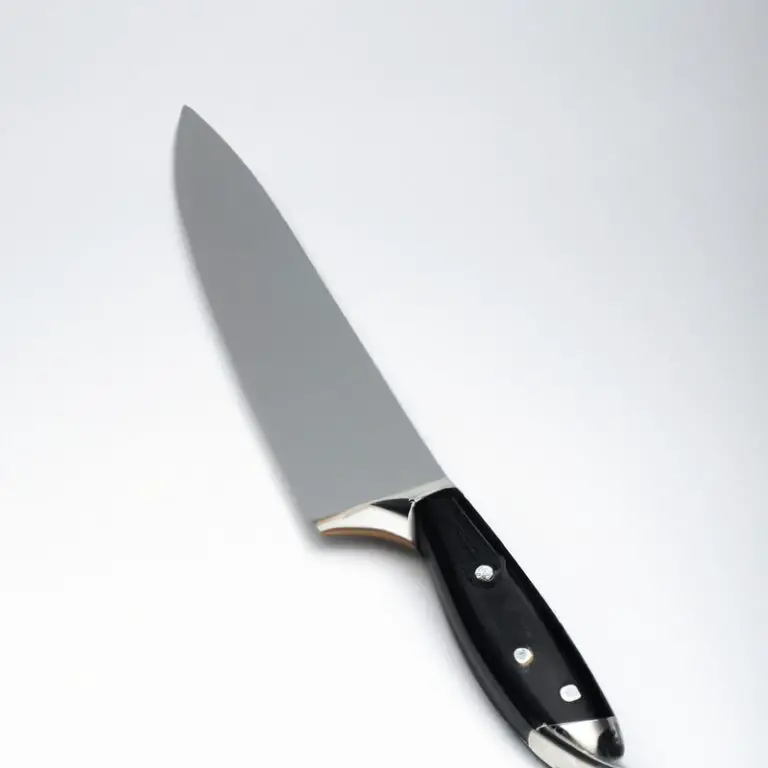What Are The Key Features Of a High-Quality Chef Knife?
Key Takeaways:
- A high-quality chef knife should be made of high-carbon stainless steel to ensure durability and sharpness.
- The blade and handle should be ergonomically designed to provide comfort and ease of use.
- A bolster and full tang construction add balance and stability to the knife.
- Look for a knife with a Rockwell hardness rating of around 55-60 for optimal performance.
Do you struggle to find the perfect chef knife that complements your cooking style? Look no further! As an experienced chef, I understand the importance of having a reliable and durable chef knife.
From blade material to handle design, each feature plays a significant role in delivering precise cuts and enhancing the overall user experience.
In this article, I will guide you through the key features of a high-quality chef knife and how to select the right one for your needs and preferences. Get ready to upgrade your cooking game with the perfect chef knife!
| Feature | Description |
|---|---|
| Blade Material | The blade should be made of high-quality steel such as VG-10 or Damascus steel, which ensures a sharp, durable edge and easy maintenance. |
| Blade Length | The blade length should be at least 8 inches, allowing for smooth, efficient cutting. |
| Handle Material | The handle should be made of a durable, comfortable material such as Pakkawood or Micarta, ensuring a good grip and easy control. |
| Full Tang | The blade should be full tang, meaning the blade extends through the handle, providing a balanced weight and added strength. |
| Bolster | The blade should have a bolster, which is the thick piece of metal between the blade and the handle, providing balance and protection for the hand. |
| Weight | The knife should have a balanced weight, not too heavy or too light, allowing for easy, precise cuts. |
| Sharpness | The knife should have a sharp edge, which can be maintained through regular honing and sharpening. |
| Durability | The knife should be made of high-quality materials and crafted with care, ensuring longevity and resistance to wear and tear. |
Blade material: Understanding the importance of quality steel for a chef knife
The blade material is one of the most important factors to consider when choosing a high-quality chef knife. Quality steel is the preferred material due to its durability, strength, and resistance to corrosion.
The most popular types of steel used for chef knives are stainless steel, high-carbon stainless steel, and Damascus steel.
Each type has its unique properties that affect sharpness, hardness, and overall performance. When selecting a chef knife, be sure to research the different types of blade materials and choose the one best suited for your needs and budget.
A high-quality chef knife with quality steel will ensure precision cutting, longer lifespan, and ease of maintenance.
The significance of blade shape and thickness in a high-quality chef knife
Blade shape and thickness are significant features of a high-quality chef knife. The shape determines its intended use and functionality.
For instance, a straight blade is ideal for slicing while a curved one is best for rocking motions.
The thickness affects the weight and balance of the knife, which impacts the user’s precision and control. Generally, a thinner blade is lighter and more flexible, making it suitable for delicate tasks such as filleting fish, while a thicker blade is more robust and durable, best for chopping and cutting through thick foods.
A high-quality chef knife should have a blade shape and thickness that match its intended purpose, provide balance, and enable precision control.
Handle design: Why comfort and grip are crucial for a chef knife
The handle of a chef knife is just as crucial to its overall quality as the blade. Comfortable and secure grip is vital for users as it ensures proper control and stability to make precise cuts.
Handles made with synthetic and natural materials such as composites, rubber, and wood provide both durable and comfortable grip.
It is essential to feel the handle before making a purchase to determine how it suits your grip style. Although wooden handles are popular for their classic look, they tend to absorb moisture and bacteria, making them less hygienic than synthetic options.
Comfortable handle design is an important feature that should not be overlooked when selecting a high-quality chef knife.
The role of blade balance in a professional chef knife
Blade balance is a critical aspect of a professional chef knife. It refers to the distribution of weight along the blade, creating stability and control.
With proper blade balance, a chef can safely and accurately cut through various foods without feeling fatigued or straining their wrist.
The ideal balance point is usually at the heel of the blade or close to it. Chefs can test the balance of the knife by holding it at its center of gravity and seeing if it tilts forward or backward.
A well-balanced knife enhances precision, making it easier to maneuver and complete a variety of tasks.
Therefore, it is essential to consider blade balance while choosing a high-quality chef knife.
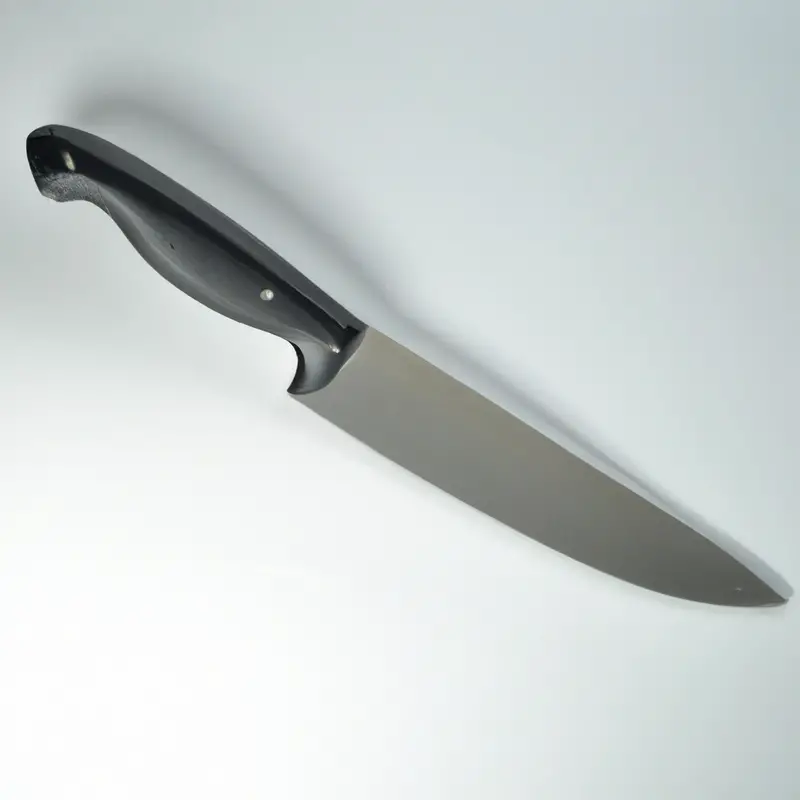
The importance of proper maintenance for a high-quality chef knife
Proper maintenance is crucial to extend the life of your high-quality chef knife. Neglecting maintenance can lead to dull blades, rust, and even breakage.
Here are a few tips for maintaining your chef knife:
- Clean your knife after each use with warm water and soap. Dry it completely with a soft towel.
- Sharpen your knife regularly to maintain its edge. Professional chefs recommend sharpening a knife every 2-3 months.
- Store your knife in a proper knife block or on a magnetic strip to prevent damage to the blade.
- Avoid putting your knife in the dishwasher as it can damage the blade and handle.
By taking good care of your chef knife, you can ensure that it stays sharp, durable and safe for use. Proper maintenance is an investment in the longevity and performance of your high-quality chef knife.
Handle material: Choosing the best material for your chef knife
The handle material is an essential aspect of a high-quality chef knife, as it impacts the overall comfort and grip of the knife. The best materials for a chef knife handle are those that provide a stable and secure grip, even when wet.
Wood handles offer an aesthetically pleasing look and provide a comfortable grip, but can be prone to cracking and absorbing moisture.
Plastic handles, on the other hand, are durable and moisture-resistant but can lack the desired grip texture. Metal handles are highly durable and offer a secure grip but can become slippery when wet.
Composite handles made of a mixture of materials provide excellent durability and grip but may not be as aesthetically pleasing.
Ultimately, the handle material you choose should depend on your personal preferences and needs. It’s essential to consider how the grip feels in your hand and whether the material is easy to maintain.
A good handle material will enhance the overall performance of your chef knife, making it easier to use.
The impact of blade length on the functionality of a chef knife
The length of a chef knife’s blade plays a crucial role in its functionality. A longer blade offers a greater cutting surface area, making it easier to cut through larger items with fewer strokes.
However, it also requires more control and skill to maneuver, especially around smaller ingredients.
On the other hand, a shorter blade offers greater precision and control for intricate cuts, but its smaller cutting surface area may make it more tedious to cut through larger items. Ultimately, the ideal blade length depends on personal preferences and the task at hand.
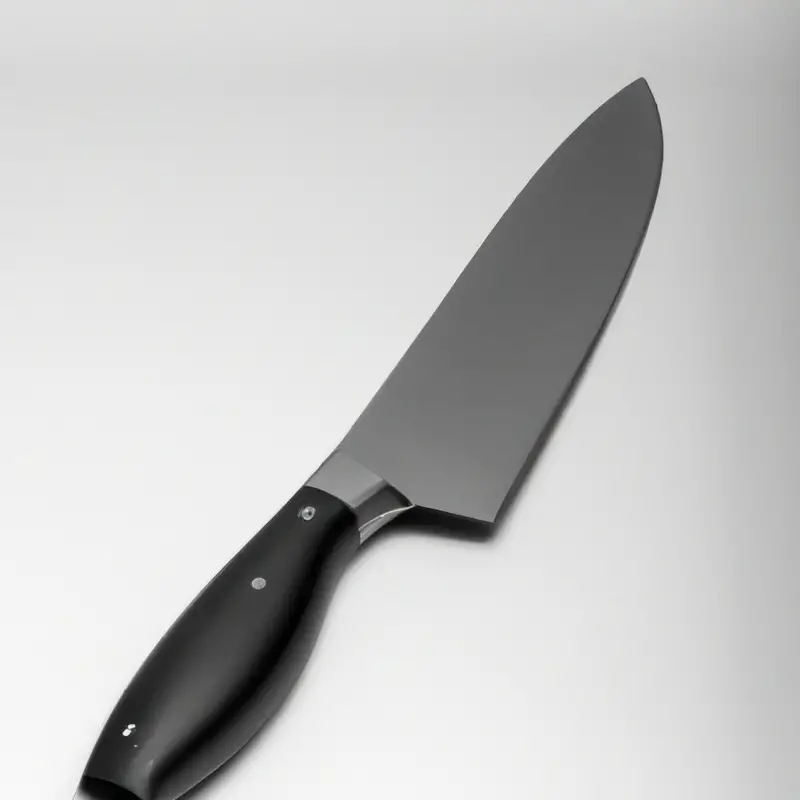
The value of a full tang construction in a professional chef knife
A full tang construction in a professional chef knife adds value to the knife’s strength, durability, and balance. A full tang refers to a continuous piece of steel that runs through the entire length of the knife, including the handle.
This design ensures that the blade is properly supported and secured, reducing the risk of the blade breaking off from the handle during use.
Additionally, a full tang improves the knife’s balance, making it easier to control and maneuver. When selecting a chef knife, prioritize full tang construction for longevity and performance.
The necessity of a sharp blade and the different types of sharpening methods for a chef knife
A sharp blade is essential for a high-quality chef knife. A dull blade can make precise cuts difficult and even dangerous.
There are several sharpening methods available for chef knives, including honing with a honing rod and sharpening with a whetstone or an electric sharpener.
Each method has its advantages and disadvantages, and it’s important to choose the right method for your needs. While honing maintains the blade’s sharpness, sharpening with a whetstone or electric sharpener removes metal to create a new edge.
It’s important to keep your chef knife sharpened regularly to ensure it performs at its best.
How to select the right chef knife for your needs and preferences
When it comes to selecting the right chef knife, consider the following factors:
- Size: Choose a blade length based on the tasks you will perform most often.
- Shape: Select a blade shape that matches your cutting style and grip.
- Steel: Look for high-quality, durable steel that holds an edge well.
- Handle: Pick a handle material that’s comfortable and provides a secure grip.
- Tang: A full tang construction prevents the blade from separating from the handle.
- Maintenance: Choose a knife that’s easy to maintain and sharpen.
- Budget: Decide on a budget based on your needs and preferences.
Ultimately, the right chef knife for you will depend on your unique needs and preferences. Consider trying different knives before making a purchase to find the one that feels most comfortable and efficient in your hand.
Final Verdict
A high-quality chef knife is an essential tool for any professional or home cook. Its design and construction should prioritize blade material, shape and thickness, handle design and material, balance, length, tang construction, and sharpness.
Consider investing in a chef knife with these key features, as it will not only improve your cooking experience but also produce better and more consistent results.
Proper maintenance, such as regular sharpening and cleaning, is crucial to preserving its quality and longevity. By selecting the right chef knife to meet your needs and preferences, you can elevate your culinary skills to the next level.
With this knowledge, you can confidently purchase and use a chef knife that will serve you well for years to come.

